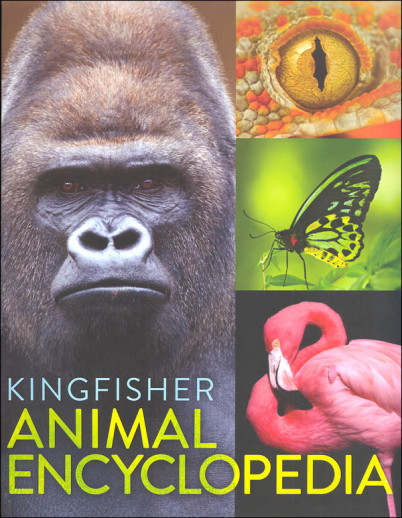We use cookies to make your experience better. To comply with the new e-Privacy directive, we need to ask for your consent to set the cookies. Learn more.
Kingfisher Animal Encyclopedia (4th Edition)
So, why add another animal encyclopedia to this section when there are already two here from other well-known publishers? Well, this one is just different, and different in some very appealing ways! First of all, it is hardcover, which makes it a little more durable (yet more expensive) than the DK encyclopedia. But the primary reason for the difference is in its organization, which makes it more navigable next to a zoology or biology course. Although a similar number of animals are covered here as in the DK volume (about 2,000), they are more extensively organized, as you can see if you check out our table of contents images online. The breakdown mirrors common biological classifications, including simple animals, cnidarians, flatworms/roundworms, segmented works, mollusks, arachnids, crustaceans, centipedes/millipedes, insects, echinoderms, chordates, cartilaginous fish, bony fish, amphibians, reptiles, birds and finally, mammals. Within each chapter, two-page spreads examine one sub-group in depth, such as "catfish and electric eels" in the bony fish chapter. If you flip to that spread, you'll find a short introduction to the sub-group, followed by a handful of examples of specific species within that group presented in short blocks of text with some basic information, the scientific name, distribution and size. In comparison, the DK volume is organized alphabetically by general animal group, such as "bats." If you flip to the page(s) on bats, you'll also meet a variety of different bat species, complete with lovely full-color photos similar in quality to what you will find here. Both are excellent resources, and endlessly appealing to browsing as well as use as a reference or curriculum supplement. Your choice may just depend on how you want to use the guide, and which type of organization you prefer. On a side note, while this is from a secular viewpoint, evolution is not covered in any amount of depth here; the emphasis is really on the animals! 320 pgs, hc. Jess
Meet an amazing menagerie of creatures on this breathtaking safari through the animal kingdom. The Kingfisher Animal Encyclopedia spans Earth from pole to pole, covering 2,000 animals from the tiniest protozoan to the mightiest mammal.
Each entry describes the animal's characteristics, behavior, and distribution, and gives their Latin names. The meticulously researched information is highlighted by clear, authoritative writing and more than 1,000 photographs and illustrations. Throughout the book, special feature panels focus on various aspects of animal behavior such as camouflage, migration, and hibernation. With comprehensive back-matter including a glossary, alternative name index, and general index, this one-stop reference tool is perfect for research or for browsing by animal-lovers of all ages.
| Product Format: | Hardcover |
|---|---|
| Brand: | Kingfisher |
| Grades: | 3-7 |
| ISBN: | 9780753474594 |
| Length in Inches: | 11 |
| Width in Inches: | 9 |
| Height in Inches: | 1 |
| Weight in Pounds: | 3.65 |

